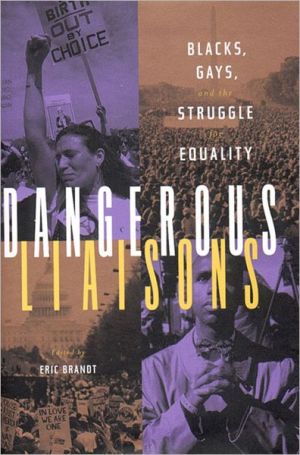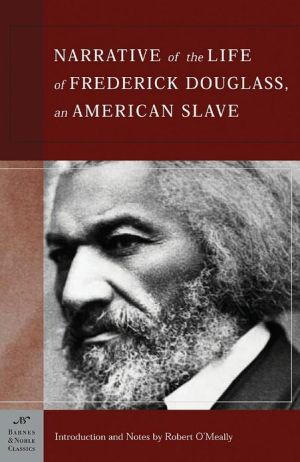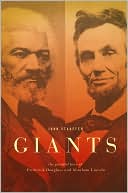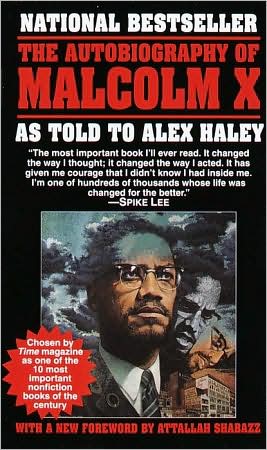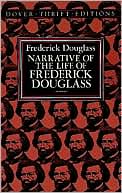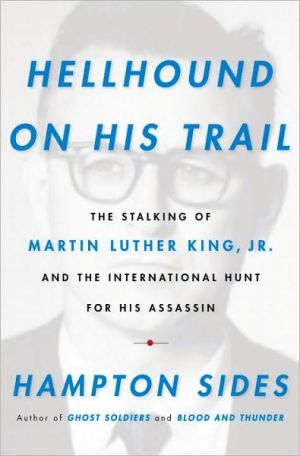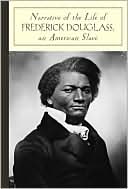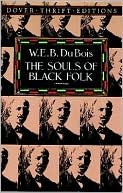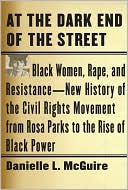Dangerous Liaisons: Blacks, Gays, and the Struggle for Equality
Dangerous Liaisons provides a platform for the leading minds of both communities - including thinkers who straddle both worlds - to debate the volatile subject of the relationship between African Americans and homosexuals. It includes writing on minority relations by well-known historians, political analysts, activists, writers, and philosophers. They address such timely issues as recent high-profile hate crimes against blacks and gays: racism in gay and lesbian rights organizations;...
Search in google:
Dangerous Liaisons provides a platform for the leading minds of both communities - including thinkers who straddle both worlds - to debate the volatile subject of the relationship between African Americans and homosexuals. It includes writing on minority relations by well-known historians, political analysts, activists, writers, and philosophers. They address such timely issues as recent high-profile hate crimes against blacks and gays: racism in gay and lesbian rights organizations; homophobia in the black church; the shift in highest rate-of-infection of HIV from the gay community to the black community; and stereotypes in books and films.Publishers WeeklyIn 17 new and classic essays, historians, political analysts and artists assess why blacks and gays have such a volatile relationship, despite their shared experiences of discrimination in education and on the job, of police harassment and the devastating impact of AIDS. Author and activist Barbara Smith gets right to the heart of the matter: "the most maddening question anyone can ask me is, `Which do you put first: being black, a woman or gay?'" The assumption that identities must be "prioritized" may be at the root of persistent conflict among black and gay rights organizations. Rutgers professor and poet Cheryl Clarke's groundbreaking 1983 essay "The Failure to Transform," in which she confronts homophobia within the black left, appears with a contemporary response, "Fighting Homophobia versus Challenging Heterosexism," from Yale professor Cathy Cohen and doctoral candidate Tamara Jones, who believe that the positive "shift in political and academic rhetoric fails to reflect a deep understanding of heterosexism as a normative system." In an interview with Rev. Edwin Sanders of Nashville's Metropolitan Interdenominational Church, Gary David Comstock discusses the role of the black church in facilitating understanding between the two communities, while Jewelle Gomez's analysis of the history of "passing" among blacks reveals black lesbians as the "tragic mulattas" of contemporary society. Overall, this is a stirring collection that doesn't shy away from the prickly questions that vex the relationship between the two communities. (June) Copyright 1999 Cahners Business Information.
\ \ \ \ \ Chapter One\ \ \ Blacks and Gays Healing the Great Divide\ \ \ Barbara Smith\ \ \ Perhaps the most maddening question anyone can ask me is "Which do you put first: being black or being a woman, being black or being gay?" The underlying assumption is that I should prioritize one of my identities because one of them is actually more important than the rest or that I must arbitrarily choose one of them over the others for the sake of acceptance in one particular community.\ I always explain that I refuse to do political work and, more importantly, to live my life in this way. All of the aspects of who I am are crucial, indivisible, and pose no inherent conflict. They only seem to be in opposition in this particular time and place, living under U.S. capitalism, a system whose functioning has always required that large groups of people be economically, racially, and sexually oppressed and that these potentially dissident groups be kept divided from each other at all costs.\ I've devoted many years to making the connections between issues and communities and to forging strong working coalitions. Although this work is far from finished, it has met with some success. In 1993, however, two aspects of my identity and two communities whose freedom I've always fought for are being publicly defined as being at war with one another.\ For the first time, the relationship between the African American and lesbian and gay communities is being widely debated both within and outside of movement circles. One catalyst for thisdiscussion has been gay leaders cavalierly comparing lifting the ban on homosexuals in the military with racially desegregating the armed forces following World War II. The National Association for the Advancement of Colored People (NAACP) and other black civil rights organizations' decisions to speak out in favor of lesbian and gay rights and to support the April 1993 march on Washington have met with protests from some sectors of the black community and have also spurred the debate.\ Ironically, the group of people who are least often consulted about their perspectives on this great divide are those who are most deeply affected by it: black lesbian and gay activists. Contradictions that we have been grappling with for years, namely homophobia in the black community, racism in the lesbian and gay community, and the need for both communities to work together as allies to defeat our real enemies are suddenly on other people's minds. Because black lesbians and gays are not thought of as leaders in either movement, however, this debate has been largely framed by those who have frighteningly little and inaccurate information.\ Thanks in part to the white lesbian and gay community's own public relations campaigns, black Americans view the lesbian and gay community as uniformly wealthy, highly privileged, and politically powerful, a group that has suffered nothing like the centuries of degradation caused by U.S. racism. Reverend Dennis Kuby, a civil rights activist, states in a letter to the New York Times: "Gays are not subject to water hoses and police dogs, denied access to lunch counters, or prevented from voting." Most blacks have no idea, however, that we are threatened with the loss of employment, of housing, and of custody of our children, and are subject to verbal abuse, gay bashing, and death at the hands of homophobes. Kuby's statement also does not acknowledge those lesbians and gays who have been subjected to all of the racist abuse he cites, because we are both black and gay. Because we are rendered invisible in both black and gay contexts, it is that much easier for the black community to oppose gay rights and to express homophobia without recognizing that these attacks and the lack of legal protections affects its own members.\ The racism that has pervaded the mainstream gay movement only fuels the perceived divisions between blacks and gays. Single-issue politics, unlike lesbian and gay organizing that is consciously and strategically connected to the overall struggle for social and economic justice, do nothing to convince blacks that lesbians and gays actually care about eradicating racial oppression. At the very same time that some gays make blanket comparisons between the gay movement and the black civil rights movement, they also assume that blacks and other people of color have won all our battles and are in terrific shape in comparison with lesbians and gays.\ In an interview in the Dallas Voice (December 1992), lesbian publisher Barbara Grier states: "We are the last minority group unfairly legislated against in the U.S." Grier's perception is of course inaccurate. Legislation that negatively affects people of color, immigrants, disabled people, and women occurs every day, especially when court decisions that undermine existing legal protections are taken into account.\ In 1991, well before the relationship between the gay community and the black community was a hot topic, Andrew Sullivan, editor of the New Republic asserted the following in the Advocate:\ \ \ The truth is, our position is far worse than that of any ethnic minority or heterosexual women.\ Every fundamental civil right has already been granted to these groups: The issues that they discuss now involve nuances of affirmative action, comparable pay, and racial quotas. Gay people, however, still live constitutionally in the South of the '50s....\ We are not allowed to marry—a right granted to American blacks even under slavery and never denied to heterosexuals. We are not permitted to enroll in the armed services—a right granted decades ago to blacks and to heterosexual women.\ Our civil rights agenda, then, should have less to do with the often superfluous minority politics of the 1991 Civil Rights Act and more to do with the vital moral fervor of the Civil Rights Act of 1964.\ A better strategy to bring about a society more tolerant of gay men and women would involve dropping our alliance with the current Rainbow Coalition lobby and recapturing the clarity of the original civil rights movement. The point is to rekindle the cause of Martin Luther King Jr. and not to rescue the career of Jesse Jackson.\ \ \ Sullivan's cynical distortions ignore that quality of life is determined by much more than legislation. Clearly, he also knows nothing about slavery. Slaves were frequently not permitted to marry and their marriages and family relationships were not legally recognized or protected. Until 1967 when the Supreme Court decided Loving v. Virginia, it was illegal for blacks to marry whites in sixteen states. The armed services were rigidly segregated until after World War II. Racist abuse and denial of promotions and military honors typified the black experience in the military. Sullivan also has not noticed that joblessness, poverty, racist and sexist violence, and the lack of decent housing, health care, and education make the lives of many "ethnic minorities" and "heterosexual women" a living hell. But Sullivan doesn't care about these folks. He just wants to make sure he gets what he thinks he deserves as an upper-class white male.\ Lesbians and gay men of color have been trying to push the gay movement to grasp the necessity of antiracist practice for nigh on twenty years. Except in the context of organizing within the women's movement with progressive white lesbian feminists, we haven't made much progress.\ I'm particularly struck by the fact that for the most part queer theory and queer politics, which are currently so popular, offer neither substantial antiracist analysis nor practice. Queer activists' understanding of how to deal with race is usually limited to their including a few lesbians or gay men of color in their ranks, who are expected to carry out the political agenda that the white majority has already determined.\ In October 1993, Lesbian Avengers from New York City traveled to several states in the Northeast on what they called a "freedom ride." Lesbians of color from Albany, New York, pointed out that the appropriation of this term was offensive because the organization had not demonstrated involvement in antiracist organizing and had made few links with people of color, including nonlesbians and nongays in the communities they planned to visit. Even when we explained that calling themselves "freedom riders" might negatively affect the coalitions we've been working to build with people of color in Albany, the group kept the name and simply made a few token changes in their press release.\ These divisions are particularly dangerous at a time when the white right wing has actually targeted people o[ color with their homophobic message. As white lesbian activist Suzanne Pharr points out in an excellent article, "Racist Politics and Homophobia":\ \ \ Community by community, the religious Right works skillfully to divide us along fissures that already exist. It is as though they have a political seismograph to locate the racism and sexism in the lesbian and gay community, the sexism and homophobia in communities of color. While the Right is united by their racism, sexism, and homophobia in their goal to dominate all of us, we are divided by our own racism, sexism, and homophobia.\ \ \ The right's divisive strategy of enlisting the black community's support for their homophobic campaign literally hit home for me in June 1993. A black lesbian who lives in Cleveland, Ohio, where I grew up, called to tell me that a group of black ministers had placed a virulently homophobic article in the Call and Post, Cleveland's black newspaper.\ Entitled "The Black Church Position Statement on Homosexuality," the ministers condemn "HOMOSEXUALITY (including bisexual as well as gay or lesbian sexual activity) as a lifestyle that is contrary to the teachings of the Bible." Although they claim to have tolerance and compassion for homosexuals, their ultimate goal is to bring about "restoration," that is, changing lesbians and gays back into heterosexuals in order "to restore such individuals back into harmony with God's will." One of the several sources they cite to prove that such "restoration" is possible is the Traditional Values Foundation Talking Points, 1993, a publication of the Traditional Values Coalition.\ The ministers also held a meeting and announced their goal to gather 100,000 signatures in Cleveland in opposition to the federal civil rights bill, HB 431, and to take their campaign to Detroit and Pittsburgh. A major spokesperson for the ministers, Reverend Marvin McMichol, is the minister of Antioch Baptist Church, the church I was raised in and of which the women in my family were pillars. Antioch was on a number of levels one of the most progressive congregations in Cleveland, especially because of the political leadership it provided at a time when black people were not allowed to participate in any aspect of Cleveland's civic life.\ McMichol states, "It is our fundamental, reasoned belief that there is no comparison between the status of blacks and women, and the status of gays and lesbians." He explains that being black or being female is an "ontological reality ... a fact that cannot be hidden," whereas "homosexuality is a chosen lifestyle ... defined by behavior not ontological reality."\ By coincidence, I met Reverend McMichol in May when Naomi Jaffe, an activist friend from Albany, and I did a presentation on black and Jewish relations at the invitation of Cleveland's New Jewish Agenda. Antioch Baptist Church and a Jewish synagogue cosponsored the event. My cousin had informed me that McMichol was a very important person in Cleveland and that he had just stepped down as head of the NAACP. Naomi and I were struck by his coldness to us throughout the evening in sharp contrast to the kind reception we received from both the black and Jewish participants who were mostly elder women. We guessed that it was because of his homophobia and sexism. Little did we know at the time how right we were.\ When I first got news of what was going on in my hometown, I was emotionally devastated. It would have been bad enough to find out about a major black-led homophobic campaign in any city in this country, but this place wasn't an abstraction, it was where I came from. It was while growing up in Cleveland that I first felt attraction toward women and it was also in Cleveland that I grasped the impossibility of ever acting on those feelings. Cleveland is a huge city with a small-town mentality. I wanted to get out even before I dreamed of using the word lesbian to describe who I was. College provided my escape. Now I was being challenged to deal with homophobia, dead up, in the black community at home.\ I enlisted the help of the National Gay and Lesbian Task Force (NGLTF) and Scot Nakagawa who runs their Fight the Right office in Portland, Oregon, and of members of the Feminist Action Network (FAN), the multiracial political group to which I belong in Albany. Throughout the summer we were in constant contact with people in Cleveland. FAN drafted a counter-petition for them to circulate and in early September several of us went there following NGLTF's and Stonewall Cincinnati's Fight the Right Midwest Summit. Unfortunately, by the time we arrived, the group that had been meeting in Cleveland had fallen apart.\ We had several meetings, primarily with black lesbians, but found very few people who were willing to confront through direct action the severe threat right in their midst. Remaining closeted, a reluctance to deal with black people in Cleveland's inner city, and the fact that Cleveland's white lesbian and gay community had never proven particularly supportive of antiracist work were all factors that hampered black lesbian and gay organizing. Ironically, racial segregation seemed to characterize the gay community, just as it did (and does) the city as a whole. The situation in Cleveland was very familiar to me, however, because I've faced many of the same roadblocks in attempts to do political work against racism and homophobia in my own community of Albany.\ I cannot say that our effort to support a visible challenge to the ministers in Cleveland was particularly successful. The right wing's ability to speak to the concerns and play on the fears of those it wishes to recruit; the lack of visionary political leadership among both black and white lesbians and gays both nationally and locally; and the difficulty of countering homophobia in a black context, especially when it is justified by religious pronouncements, make this kind of organizing exceedingly hard. But we had better learn to do it quickly and extremely well if we do not want the pseudo-Christian right wing to end up running this country.\ Since returning from Cleveland we have been exploring the possibility of launching a nationwide petition campaign to gather at least 100,000 signatures from black people who support lesbian and gay rights. One black woman, Janet Perkins, a heterosexual Christian who works with the Women's Project in Little Rock, Arkansas, has already spoken out. In a courageous article entitled "The Religious Right: Dividing the African American Community" Perkins takes on the ministers in Cleveland and the entire black church. She calls for black church members to practice love instead of condemnation. She writes:\ \ \ These African American ministers fail to understand they have been drawn into a plot that has as its mission to further separate, divide and place additional pressure on African Americans so they are unable to come together to work on the problems of the community ...\ What is needed in our community is a unity and bond that can't be broken by anyone. We must see every aspect of our community as valuable and worth protecting, and yes we must give full membership to our sisters and brothers who are homosexual. For all these years we have seen them, now we must start to hear them and respect them for who they are.\ \ \ This is the kind of risk taking and integrity that makes all the difference. Perkins publicly declares herself an ally who we can depend on. I hope in the months to come the gay, lesbian, and black movements in this country will likewise challenge themselves to close this great divide, which they can only do by working toward an unbreakable unity, a bond across races, nationalities, sexual orientations, and classes that up until now our movements have never achieved.\ \ \ I wrote this article for Gay Community News in 1993. Unfortunately, the "great divide" between the lesbian and gay community and the black community has not markedly improved since then. In August 1997 Alveda King, a niece of Martin Luther King, Jr., denounced California legislation designed to crack down on antigay discrimination. She stated, "To equate homosexuality with race is to give a death sentence to civil rights." A few weeks later gospel singers Angie and Debbie Winans released a song entitled "It's Not Natural" that condemned homosexuality as unnatural and antifamily. King's and the Winans's public homophobia was met with vigorous protests from black lesbians and gays from other segments of the lesbian, gay, and black communities.\ In contrast, organizing among lesbian and gay people of color has flourished in the Capital Region during the same period, catalyzed in part by the racial terrorism aimed at a number of us in 1995. An umbrella coalition of four organizations, In Our Own Voices, is providing autonomous political leadership and support for people of color. Cleveland's black lesbian and gay community has made similarly significant strides with the formation of the African American Lesbian, Gay, and Bisexual Caucus in 1995 and the publication of a newsletter. The homophobic campaign initiated by black ministers in Cleveland in the summer of 1993 and the connections I began to make there with black lesbians and gays in response to this crisis, were important factors in my decision to do research in Cleveland for my study of African American lesbian and gay history.\ Nationally, the National Black Lesbian and Gay Leadership Forum continues to build the scope of its critically important work. Under its auspices, the extraordinary activist Mandy Carter has traveled extensively as a field organizer to work with black lesbians and gays, especially in areas where organized homophobic campaigns are under way. The National Gay and Lesbian Task Force continues to work in coalition with communities of color. One aspect of these efforts is their annual Honoring Our Allies program which has recognized the members of the Congressional Black Caucus (who have the most consistently supportive voting record, compared to all the other members of congress, for example, Democrats or women, on legislation affecting lesbians and gays); the government of South Africa for becoming the first nation in history to protect the rights of lesbians and gays in its constitution; and Coretta Scott King for her decades as an ally to the lesbian, gay, bisexual, and transgendered community.
AcknowledgmentsPermissionsIntroduction: Offering a Platform for Dialogue1Branches of the Same Tree?13Blacks and Gays: Healing the Great Divide15Blacklash?25The Failure to Transform: Homophobia in the Black Community31Race and the Invisible Dyke45In Struggle57Nothing Special: The Specious Attack on Civil Rights59Blacks and Gays in Conflict: An Interview with U.S. Representative Barney Frank70Fighting Homophobia versus Challenging Heterosexism: "The Failure to Transform" Revisited80"Jesus Wept": Reflections on HIV Dis-ease and the Churches of Black Folk102"Whosoever" Is Welcome Here: An Interview with Reverend Edwin C. Sanders II142Representation and Its Discontents159Black Lesbians: Passing, Stereotypes and Transformation161Writing Robeson178Transferences and Confluences: Black Poetries, the Black Arts Movement, and Black Lesbian-Feminism189More Man Than You'll Ever Be: Antonio Fargas, Eldridge Cleaver and Toni Morrison's Beloved217The Shock of Gary Fisher243Broader Notions257Some Queer Notions About Race259On Heterosexism and Transformation: An Interview290There Is No Heirarchy of Oppressions306About the Contributors308
\ Publishers Weekly - Publisher's Weekly\ In 17 new and classic essays, historians, political analysts and artists assess why blacks and gays have such a volatile relationship, despite their shared experiences of discrimination in education and on the job, of police harassment and the devastating impact of AIDS. Author and activist Barbara Smith gets right to the heart of the matter: "the most maddening question anyone can ask me is, `Which do you put first: being black, a woman or gay?'" The assumption that identities must be "prioritized" may be at the root of persistent conflict among black and gay rights organizations. Rutgers professor and poet Cheryl Clarke's groundbreaking 1983 essay "The Failure to Transform," in which she confronts homophobia within the black left, appears with a contemporary response, "Fighting Homophobia versus Challenging Heterosexism," from Yale professor Cathy Cohen and doctoral candidate Tamara Jones, who believe that the positive "shift in political and academic rhetoric fails to reflect a deep understanding of heterosexism as a normative system." In an interview with Rev. Edwin Sanders of Nashville's Metropolitan Interdenominational Church, Gary David Comstock discusses the role of the black church in facilitating understanding between the two communities, while Jewelle Gomez's analysis of the history of "passing" among blacks reveals black lesbians as the "tragic mulattas" of contemporary society. Overall, this is a stirring collection that doesn't shy away from the prickly questions that vex the relationship between the two communities. (June) Copyright 1999 Cahners Business Information.\ \ \ \ \ BooknewsBrandt (University of California-Berkeley's New Berkeley Seminar) provides a platform for leading minds of gay and black rights communities, including thinkers who straddle both worlds, to debate the volatile subject of the relationship between African Americans and gays. This collection includes writing on minority relations by historians, political analysts, activists, and philosophers who address hate crimes against gays and blacks, racism in gay and lesbian organizations, and homophobia in the black church. Annotation c. Book News, Inc., Portland, OR (booknews.com)\ \
